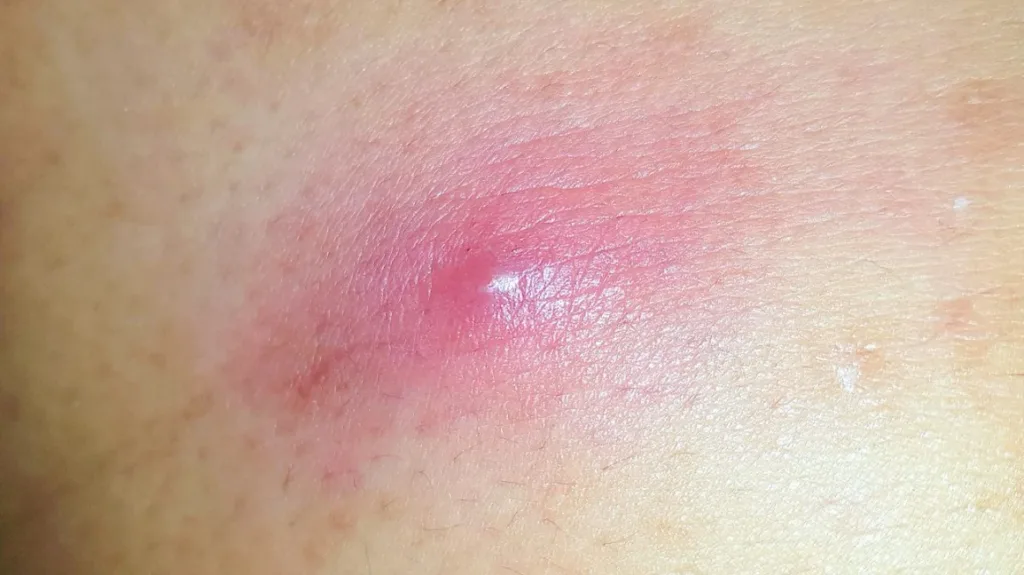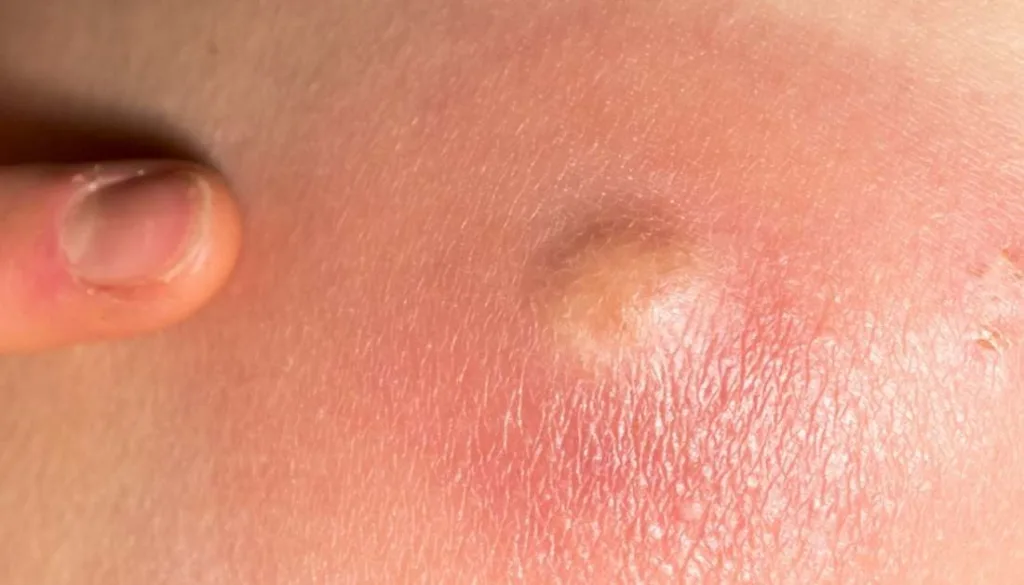A raised bump on the skin can be a cause for concern. While it may be a harmless skin condition, it can also be a sign of a more serious issue. In this article, we will discuss the different types of raised bumps, their causes, and how to treat them.
The most common type of raised bump on the skin is a pimple. These are caused by the pores on the skin becoming clogged with oil and dead skin cells. Pimples can be treated with over-the-counter medications, such as benzoyl peroxide or salicylic acid. In severe cases, a dermatologist may prescribe oral antibiotics.
Another type of raised bump on the skin is a cyst. These are pockets of fluid that can form undr the skin. Cysts can be caused by a variety of factors, including genetics, hormonal imbalances, and infections. Treatment options for cysts include draining the fluid or surgically removing the cyst.
A wart is another type of raised bump on the skin. These are caused by the human papillomavirus (HPV) and are highly contagious. Warts can be treated with over-the-counter medications, such as salicylic acid, or with prescription medications, such as imiquimod. In some cases, a dermatologist may recommend freezing the wart with liquid nitrogen.
A raised bump on the skin can also be a sign of skin cancer. Skin cancer is caused by the uncontrolled growth of abnormal skin cells. If you notice a raised bump on your skin that is changing in size or color, it is important to see a dermatologist for an evaluation. Treatment options for skin cancer include surgery, radiation therapy, and chemotherapy.
A raised bump on the skin can be a sign of a variety of conditions. It is important to identify the underlying cause of the bump and seek appropriate treatment. If you notice a change in a bump on your skin, it is important to consult with a dermatologist for an evaluation. With proper treatment, many conditions can be effectively managed.
How Do You Get Rid Of A Boil Or Risen?
To get rid of a boil or a risen, you can follow these steps:
1. Apply warm compress: Soak a washcloth in warm water and squeeze out the excess moisture. Place the warm compress on the boil for 10-15 minutes, 3-4 times a day. This can help to bring the boil to a head, which will eventually burst and drain.
2. Wash the boil: Once the boil starts draining, wash it with an antibacterial soap until all the pus is gone. Be gentle and avoid scrubbing or picking at the boil, as this can lead to further infection.
3. Apply rubbing alcohol: After washing the boil, clean the area with rubbing alcohol to kill any remaining bacteria.
4. Apply medicated ointment: Apply a topical antibiotic ointment to the boil to prevent further infection. This will also help to speed up the healing process.
5. Cover with a bandage: Cover the boil with a sterile bandage to keep the area clean and prevent further infection.
If the boil is particularly large or painful, or if you have a fever or oter symptoms, it is best to see a doctor. They may need to drain the boil or prescribe antibiotics to help clear the infection.

What Is A Risen Bump On The Skin?
A raised bump on the skin is commonly referred to as a boil or furuncle. It is an infection that affects the hair follicle and the surrounding skin tissue. Boils are characterized by redness, tenderness, and a painful lump that can grow in size witin a few days. The bump usually fills with pus as it progresses and eventually bursts, releasing the pus. Carbuncles are clusters of several boils that occur in proximity to one another. Boils are primarily caused by Staphylococcus aureus, which is a type of bacteria that resides on the skin’s surface. Other factors that can contribute to the development of boils include poor hygiene, a weakened immune system, and friction caused by tight clothing. Treatment typically involves keeping the area clean and dry, applying warm compresses, and using topical or oral antibiotics if necessary. In some cases, surgical drainage may be required.
Are Boils From An STD?
Boils are not typically sexually transmitted. Boils are caused by bacteria entering the skin through a cut or hair follicle. The most common bacteria that cause boils are Staphylococcus aureus. While boils are not an STD, the pus inside of a boil can carry contagious bacteria, so it is important to avoid contact with the pus and to wash with antibacterial soap if you come in close contact with someone who has a leaking boil. Encourage the person to keep the boil covered to prevent the spread of bacteria.
How Do You Get Rid Of A Boil Bump?
To get rid of a boil bump, there are a few steps you can take. First and foremost, it is important to apply warm compresses to the affected area and soak the boil in warm water. This will help to reduce pain and draw the pus to the surface.
Here are the steps to follow:
1. Apply warm compresses to the boil for 10-15 minutes, 3-4 times a day.
2. Soak the boil in warm water for 15-20 minutes, 2-3 times a day.
3. Once the boil comes to a head, it will burst with repeated soakings.
4. After it bursts, clean the area with warm water and soap, and cover it with a sterile bandage.
5. Continue to apply warm compresses and soakings until the boil is completely drained.
6. Avoid squeezing or picking at the boil to prevent further infection.
If the boil is large, painful, or does not go away after a few days, it is important to seek medical attention. A healthcare professional may need to drain the boil and prescribe antibiotics to treat the infection.

Conclusion
A boil (or furuncle) is a raised bump on the skin that is filled with pus. It is caused by a bacterial infection, usualy Staphylococcus aureus. Boils are not typically sexually transmitted, but close contact with an infected person can spread the contagious bacteria. Treatment involves applying warm compresses and soaking the boil in warm water to draw out the pus. Once the boil comes to a head, it will burst with repeated soakings. It is important to keep the affected area clean and to use a topical antibiotic ointment to prevent further infection. If the boil does not heal on its own within a week or becomes increasingly painful or swollen, it is important to seek medical attention.
